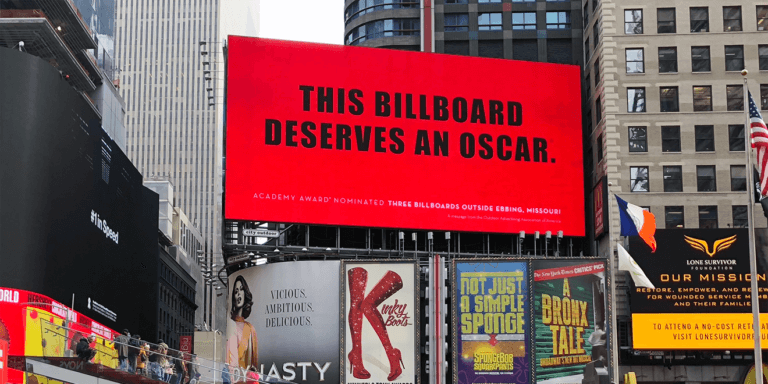
I think we can all agree that cozying up on the couch and binge watching the latest TV series is all anyone’s been doing on their weekends lately. People’s media habits have become limited to online activities and watching television. According to The National Center for Biotechnology Information, 73% of people agreed to a significant increase in binge-watching, averaging around 3-5 hours. The constant availability of wireless internet and smart mobile devices is causing more online consumption than ever. Add to that the convenience of streaming platforms such as Netflix, Amazon Prime, Apple TV, and Disney +, and it’s no wonder why the market is able to continuously thrive.
As the entertainment industry continues to evolve with the rise of streaming services, advertising spend is adjusting to consumer preferences as well. The cable industry is facing challenges with the growth in available channels and programming leading to audience fragmentation. This is making it difficult for brands to effectively reach sizable television audiences without excessive ad spending. Traditionally, movies and TV shows were advertised on the channel network that broadcasts them. However, streaming services, such as Netflix and Amazon Prime, are becoming the dominant viewing outlets and they don’t follow the same method of advertising as cable television does like allowing for commercial breaks. Additionally, before the pandemic, the best and most entertaining way of finding out about new releases was by watching trailers in a movie theater. Unfortunately, the majority of cinemas are closed in the U.S., leading to studios such as Warner Bros., to shift towards prioritizing streaming instead. For example, Disney shifted “Mulan,” Pixar’s “Soul,” and “Artemis Fowl” to Disney+ and have been considering the same fate for their upcoming movies as well. As a result, their streaming service subscriptions have been bulked up. With all of this in mind, the entertainment industry must seek out different mediums of advertisements in order to promote their films and shows to a large audience. This is why advertisers are relying on OOH to deliver. OOH is able to reach a large audience, target the demographics of viewers that would be interested in the content of the show or film, and is viewed favorably by the general public. OOH can creatively reinforce the content of the show or movie being promoted, reach the targeted audience, create anticipation for premiere dates, and most importantly, it’s the most cost-efficient in comparison to television and cinema ads.
What makes OOH so effective?
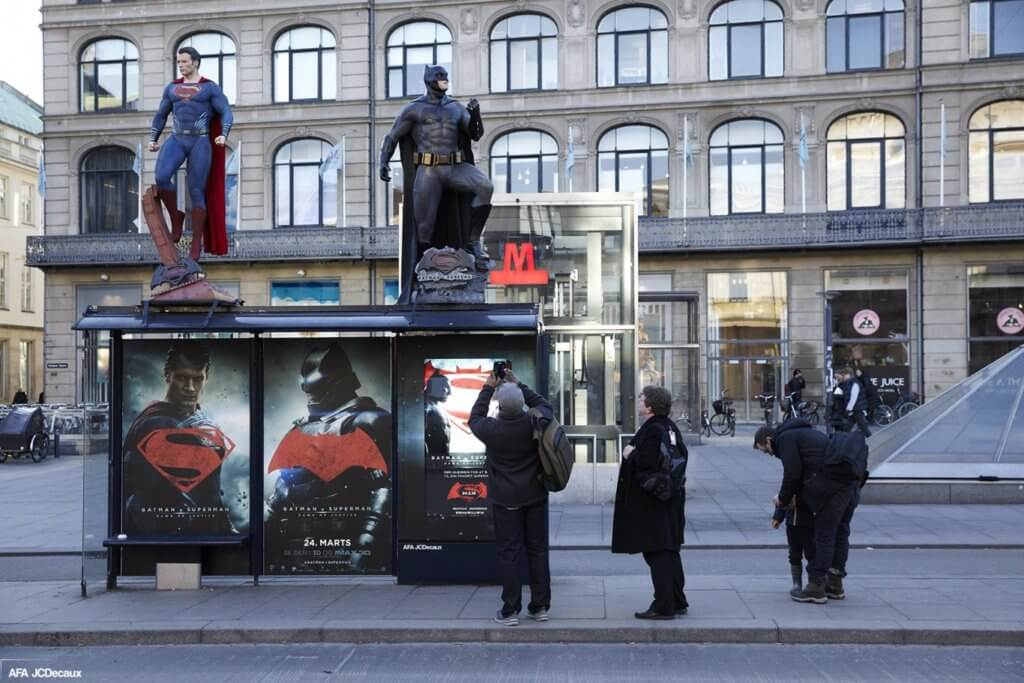
With the abundance of available shows and films, it’s hard to tell which will be a success and which will be a flop. When viewers come across an OOH ad, it’s a way to let them know that, “Hey! this show is good enough to be up on this billboard, so chances are it will be worth your while”. OOH has a unique way of capturing people’s imaginations, creating buzz online and offline, and ultimately intriguing consumers to view the media. The entertainment industry is a master at building up anticipation for new releases, but they still have to compete for audience attention. The nature of OOH allows entertainment companies to interrupt the audience’s daily routine with visually appealing, large-scale, and experiential installations that build fame and word-of-mouth. According to the Arbitron OOH Advertising Study, 71% of travelers often look at the messages on roadside billboards and more than 37% report looking at an OOH ad each time they pass one. Talk about good engagement!
Although there is high demand for good content, competition between studios is fierce and standing out from the crowd and selling a movie or TV show to an audience can require nearly as much creativity as producing the media itself. It’s because of this that many advertisers turn to OOH as the medium that’s proven to deliver a massive reach at a rapid rate, especially during a narrow window of opportunity to promote the media before release date.
Streaming Services Starring OOH
The streaming service and on-demand entertainment industry is constantly trying to keep up with growing consumer demands. With new video streaming services popping up left, right, and center, even the top players in the industry must consistently promote their new line-up to attract new customers and maintain existing ones. This is why platforms such as Netflix, Hulu, Disney +, and Amazon Prime are pairing with OOH. In order to deliver engaging ads that will entice consumers to purchase the service, subscribe, or simply tune-in, an advertising medium like OOH is needed. The most prominent example is how Netflix has been utilizing OOH advertising for years, promoting successful shows such as, ‘ Stranger Things’ and ‘13 Reasons Why’. Following in the footsteps of theatres that use OOH to promote movie premieres, Netflix also uses the medium to promote launch dates. Realizing the success that OOH advertising has made possible for Netflix, they have further invested in OOH by purchasing their own billboards. Being the innovator and top performer in it’s field, Netflix’s decision to purchase approximately 3 dozen billboards got competitors wondering about the reasoning behind it and whether they should follow their lead. It’s no mistake that Netflix is a strong believer in the effectiveness of the medium and there is plenty of statistics that support this claim. Just to name a few:
- OOH is 382% more effective at sending people online to learn about an advertiser than TV.
- OOH generates $5.97 in spending for every $1 an advertiser drops.
- 55 % of people who’ve seen a billboard say they were “highly engaged” by its message.
In addition to the many successful OOH ads that Netflix has launched, they continue to amaze people with their adaptation skills during the pandemic. At the start of the pandemic, Netflix placed spoilers of it’s most popular shows across various cities. The concept was a clever way to keep people safe for their own good. By not leaving their homes, people wouldn’t have to worry about running into any spoilers along the way.
Netflix also launched a campaign in Los Angeles dedicated to the hard working crew members that create shows and films, but typically are the ones that remain behind the camera. The ad showcases photos of them at work, giving them the spotlight for a change with a message of hope and appreciation that read, ‘You will work in this town again. Until then, Thank You’. With the pandemic causing productions to shut down, crew members have been struggling to make ends meet. The campaign was made possible by funds set by Netflix of up to $150 million to support the town’s essential workers.
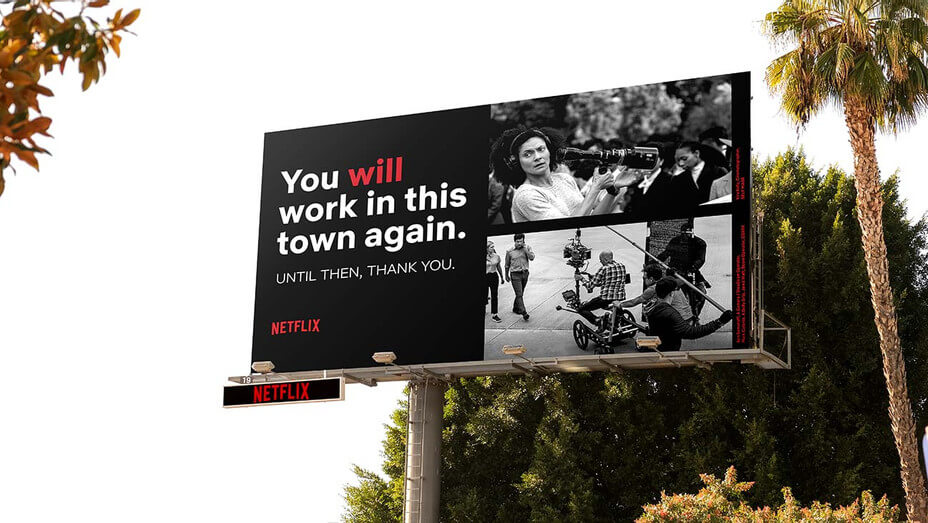
OOH and The Film Industry
Sooner or later the pandemic must come to an end, meaning consumer habits will resume as they were before. Many films that studios believe are more ‘theatre-worthy’ than others, are being put on hold until the majority of cinemas reopen. There will surely be a comeback for movie theatres and when that happens, we will be seeing a lot of OOH advertising for new film releases. OOH has been used by movie studios long before TV networks and streaming services joined in. OOH is perfect for raising momentum during releases and maintaining that hype even during DVD/Blu-ray sales and licensing periods.
While movie studios’ main goal is to gain big returns at the box office, it doesn’t end there. Profit margins on DVD/Blu-ray sales or licensing the film to TV/OTT channels is significantly higher than the theatrical release. For this reason, it’s important that studios build a ‘brand’ for a film in order to take advantage of this profit margin. The same principle applies for streaming services, as many subscription services also appreciate the fame and brand-building OOH offers – which are crucial for long-term profitability and growth. Proof of this is the investment that goes into OOH ads by the film industry and streaming services that directly reflect its core strength to build a brand and engage audiences through innovative activations.
A Jurassic Adventure
Entertainment brands have embraced all developments that OOH and Digital OOH (DOOH) have to offer to ensure that their campaigns capture the spirit of the film. The sky is the limit for movie advertisers, from interactive digital executions to dynamic social media OOH campaigns, the main goal of these campaigns is to entertain the audience and build excitement around the release.
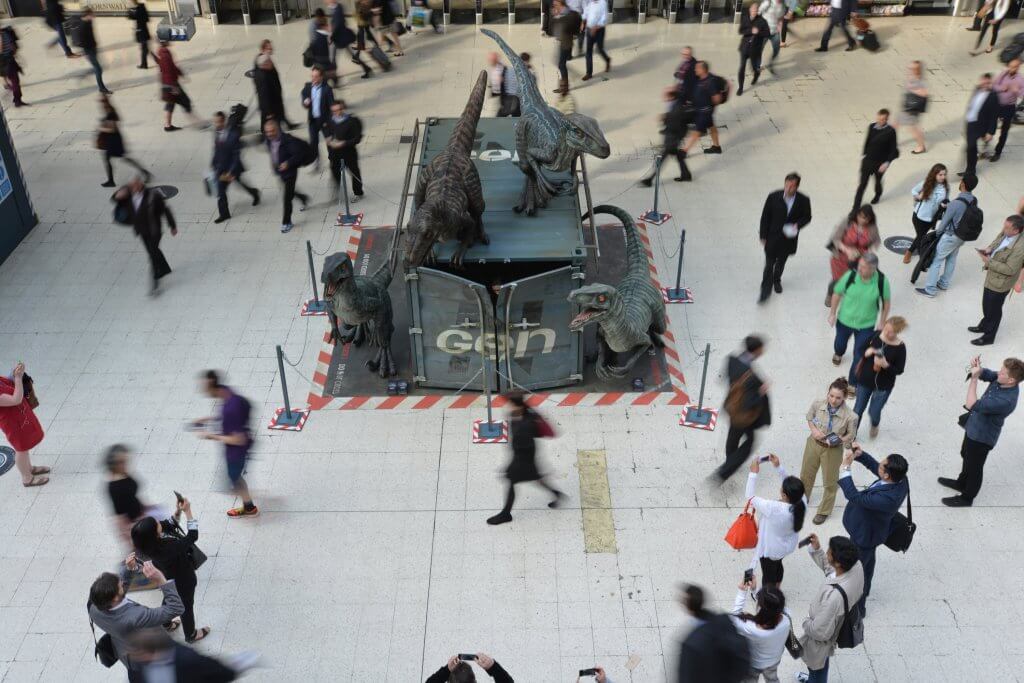
Universal Pictures, Amblin Entertainment’s Jurassic World, and JCDecaux UK did just that to promote the Jurassic World franchise in 2015 and 2018. For the release of the films, they transformed the Waterloo Station in the UK into the Jurassic Theme Park. As people arrived at the station, they were welcomed with captivating digital and static visuals of dinosaurs, park scenes, and life-size growling Velociraptors. As the second movie, Jurassic World: Fallen Kingdom, was set to release, they followed through on the same experiential idea with an event that included an 11-metre long, roaring T-Rex floating down the Thames before settling at King’s Cross Station. Both campaigns created a sense of adventure for viewers by combining experiential opportunities and Augmented Reality (AR) that took them on a journey into the world of dinosaurs.
Truck-side Ads Delivering Entertainment to your Door
At a time when people are constantly looking for a great series to binge and are confined to their local neighborhoods’, a great use of traditional OOH media comes to mind – truck-side advertising. Truck-side ads are a great solution for reaching a targeted audience due to their mobile advantage over static billboards.
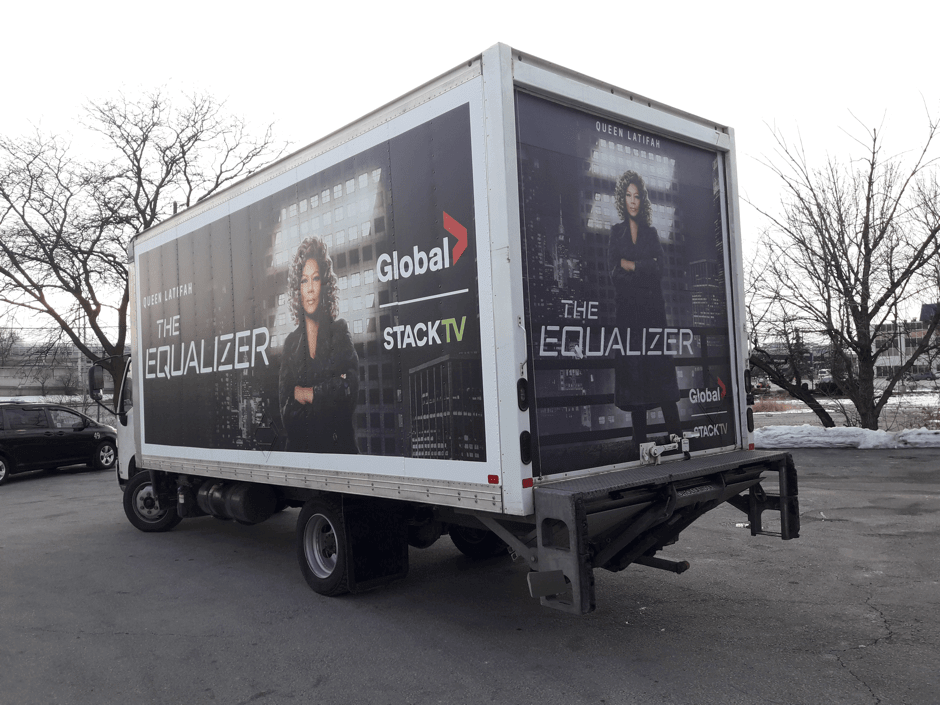
This is why two brand new TV shows, Clarice and The Equalizer, have partnered with Movia to create a truck-side advertising campaign that would entice passersby to tune in when the shows are released. With 12 residential delivery trucks in Toronto and 10 in Calgary, people are sure to take notice of the large ads that meet them at eye-level. What gives truck-side advertising a little added value is the drivers who also engage with bypassers by handing out fliers as they go about their regular delivery, ensuring that the campaign reaches its maximum potential.
A Billboard is Born

OOH is used to promote movies and series’ but can a movie make a billboard famous? That was the case for Lady Gaga’s hit movie, ‘ A Star is Born’, when a real-life version of the OOH ad appeared in the same location as it was in the film, making fans go crazy as the billboard went viral. The purpose of the billboard was to promote the success of the film just days before the Golden Globe Awards. Fans, and even celebrities, posted photos of themselves standing beside the billboard while praising the film. The billboard earned more than 8,000 mentions and reached over 38 million people through social media. The billboard got so much attention that Netflix even recreated the same billboard but replaced Lady Gaga with Amy Shumer to promote the stand-up special, ‘Amy Schumer Growing’. It just goes to show what one billboard is capable of.
The Bottom Line
As the world faces a pandemic, movies and TV shows have a way of helping us cope by giving us a break from the constant news and keeping us entertained. As a result, television consumption has increased greatly, specifically streaming services. With a higher demand for entertainment, comes more opportunity for advertising. As we’ve seen from this article, OOH stands its ground as a medium that will continue to execute creative concepts, create hype, build brand value, and most importantly, reach the target audience. For this reason, streaming services are investing heavily in OOH with no signs of backing down. As for the film industry, years of creative and experiential campaigns have been born through OOH and it is expected to return in full force once the pandemic is over. Until then, May the force of OOH be with you!


